Sea Turtle Conservancy (STC) is proud to announce another top rating from Charity Navigator, the leading evaluator of non-profit groups in the United States. STC received 4 out of 4 stars for the 14th year, indicating that our organization adheres to good governance and other practices that minimize the chance of unethical activities and consistently executes our mission in a fiscally responsible way.
“The Board and staff of Sea Turtle Conservancy take great pride in our consistent high ratings from Charity Navigator,” said David Godfrey, STC Executive Director, “and it gives our donors confidence that their contributions are being managed wisely to the maximum benefit of sea turtles.”
According to Charity Navigator, a 4 star rating is an ‘exceptional’ designation, and differentiates Sea Turtle Conservancy from its peers and demonstrates to the public it is worthy of their trust. STC spends almost 90 cents of every dollar donated directly on research, conservation and education programs. STC’s commitment to transparency, good governance and fiscal responsibility ensures that donations are used in an efficient manner to support conservation programs.
“We are proud to announce Sea Turtle Conservancy has earned our fifth consecutive 4-star rating,” says Michael Thatcher, Charity Navigator CEO. “This is our highest possible rating and indicates that your organization adheres to sector best practices and executes its mission in a financially efficient way. Attaining a 4-star rating verifies that Sea Turtle Conservancy exceeds industry standards and outperforms most charities in your area of work. Only 18% of the charities we evaluate have received at least 5 consecutive 4-star evaluations, indicating that Sea Turtle Conservancy outperforms most other charities in America. This exceptional designation from Charity Navigator sets Sea Turtle Conservancy apart from its peers and demonstrates to the public its trustworthiness.”
STC’s rating and other information about charitable giving are available free of charge on Charity Navigator’s website here.
Florida’s globally-important sea turtle populations face myriad anthropogenic threats, with coastal armoring and artificial lighting being among the most urgent. During the 2021 Florida Legislative Session held in March and April, Sea Turtle Conservancy (STC) advocated against two bills that would have greatly worsened both of these threats.
One of the bills (HB 1133 and SB 1504 – Coastal Construction and Preservation) sought to weaken the regulation of coastal armoring, which would have facilitated a rapid expansion of sea wall construction along important sea turtle nesting beaches in Florida. Seawalls block turtles from reaching the upper portion of the beach, causing them to nest in less-than-optimal nesting areas lower on the beach where their nests are more susceptible to waves and inundation.
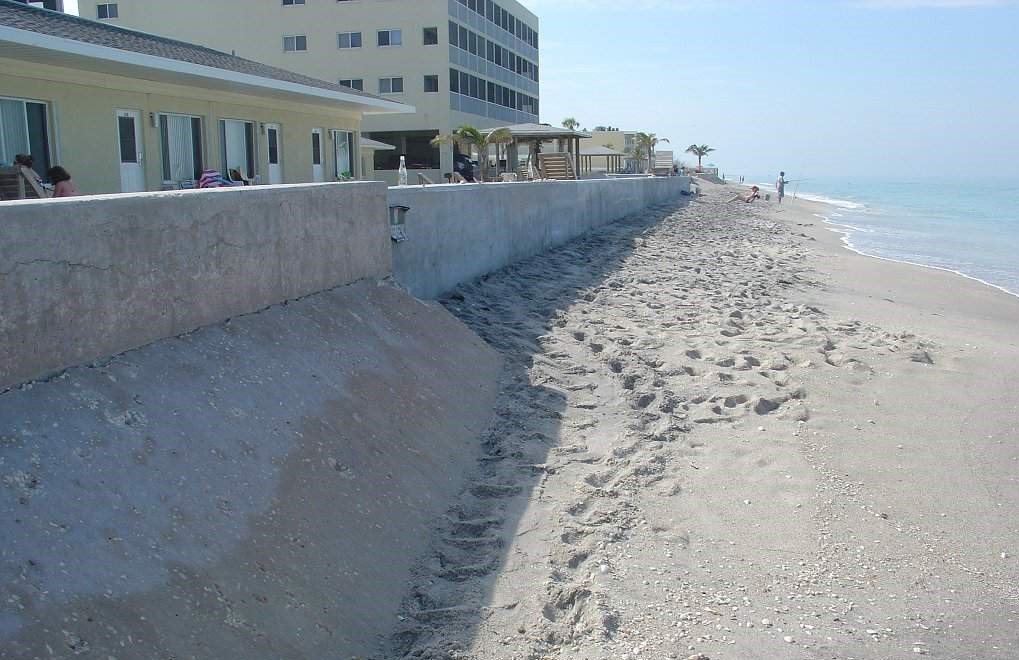
In addition, studies have shown that fewer turtles emerge onto beaches with seawalls than onto adjacent, non-walled, natural beaches. Sea walls also disrupt natural beach dynamics and increase the rate of erosion down the beach. This can create a ‘domino effect’ that necessitates more and more seawalls, destroying sea turtle and shorebird nesting habitat.
Introduced by Representative Tom Leek and Senator Tom Wright, whose districts include parts of Volusia and Brevard Counties, the bill would have eliminated any consideration of whether upland structures are actually vulnerable to erosion before qualifying for a sea wall. If a beachfront property owner requested a permit to build a sea wall (or sought a permit for a wall already installed illegally), the Florida Department of Environmental Protection (FDEP) would be forced by law to grant the permit. This process would result in no consideration of impacts to the beach, neighbors, other natural alternatives or federally protected sea turtles.
After STC learned of the bill, Executive Director David Godfrey and Holly Parker-Curry with Surfrider Foundation met with the primary bill sponsor. As is often the case with short-sighted legislation like this, the bill was designed to appease a particular group of local constituents whose request for a sea wall permit was denied because their homes are not actually vulnerable or eligible for sea walls. In attempting to resolve a narrow local issue, the sponsors were willing to roll back protection for sea turtles and coastal habitat throughout Florida.
Following vocal opposition by STC and our colleagues, both the House and Senate versions of the bill died in their first committees. However, this issue is likely to come back during future legislative sessions, as beachfront property owners continue to face the impacts of sea level rise and coastal erosion in Florida. STC will continue to advocate for natural solutions to this worsening problem, including the use of living shorelines, beach nourishment, managed retreat from heavily eroding beaches and stricter policies on where people can build on the coastline.
Another bill sought to strip local governments of their ability to regulate certain building design elements on private homes. This developer-backed legislation was not intended to directly impact sea turtles, but the wording was so vague that it would have inadvertently eliminated the ability of coastal counties and municipalities to enforce sea turtle lighting regulations. Language in the bill would have prevented local governments from regulating any “exterior nonstructural architectural ornamentation” on single- and two-family homes in Florida. The bill, S.B. 284 and H.B. 55 – Building Design, was introduced by Senator Keith Perry and Representative Toby Overdorf. Since the exterior lighting used on homes would fall under definitions contained in the bill, if passed the legislation would have undermined all local sea turtle protection ordinances that prohibit unshielded white lights during sea turtle nesting season, which could result in an increase in sea turtle disorientations statewide.
After alerting the Florida Fish and Wildlife Conservation Commission’s (FWC) Legislative Affairs office about the potential impacts of the bill, STC drafted an amendment that, if added to the legislation, would ensure sea turtle protection ordinances remained intact. Despite numerous attempts to get the bill’s sponsors to acknowledge the unintended glitch and support our amendment, this approach was getting us nowhere. Eventually, STC contacted Senate Majority Leader Debbie Mayfield, whose district includes the Archie Carr National Wildlife Refuge in Brevard and Indian River Counties. Senator Mayfield took the issue very seriously, knowing how important sea turtles are to her constituents.
With her leadership, STC’s amendment was eventually added to version of the bill that eventually passed. STC is appreciative of all of our partners at FWC, the Surfrider Foundation, Florida Conservation Voters and within the Legislature who moved this amendment forward. We are particularly grateful to Sen. Mayfield for her leadership on this matter.
Although STC’s work on these two bills resulted in good outcomes for sea turtles in 2021, another round of bad bills for sea turtles is likely to arise next year. If a proposal is particularly damaging to sea turtles, STC will alert its members and followers and encourage them to contact representatives in the Legislature. We have defeated harmful proposals together in the past, and we are confident that we will have the same success in the future.
Make sure you subscribe to our e-newsletter and/or follow us on social media @conserveturtles to receive Action Alerts and other legislative updates. Email lexie@conserveturtles.org with questions or to sign up now!
Fahlo, previously branded as Wildlife Collections, is the exclusive turtle tracking jewelry partner of the Sea Turtle Conservancy and donates 10% of net profits from every turtle bracelet and plush sold to STC. Thanks to our partnership, Fahlo has donated more than $775,000 towards our sea turtle conservation programs!
Fahlo was created in 2018 by two childhood best friends, Daniel Gunter and Carter Forbes. They wanted a way to get more people involved in saving wildlife, so they came up with the idea of their popular animal tracking bracelets. Each bracelet comes with a card that gives customers the name, picture, and backstory on their animal, along with a QR code that allows them pull up a tracking map on their phone or computer, showing where their animal is in the world! 10% of net profits of each bracelet are donated to the organization associated with the animal on the bracelet. “By combining a tangible bracelet and interactive tracking experience, our goal is to educate customers about wildlife and excite them about conservation,” said Forbes.
Helping raise money and awareness for all endangered wildlife species is the overall mission at Fahlo. Along with sea turtles, Fahlo also supports elephants and polar bears through the sale of their tracking jewelry. “Since plastic pollution in the ocean is at an ever-increasing rate, we felt that raising awareness for the rapid decreasing population of sea turtles was a great place to start,” said Gunter. “With some in-depth research of trying to figure out what organization would have the biggest impact on saving sea turtles, we set our sights on the Sea Turtle Conservancy as the clear choice to partner with!”
The partnership between STC and Fahlo continues to grow each year! In 2020, Fahlo adopted and named two satellite-tracked turtles as part of STC’s Tour de Turtles program. Robin, an endangered green turtle, and Leia, a loggerhead turtle, were both equipped with satellite transmitters after nesting in the Archie Carr National Wildlife Refuge in July 2020. In 2021, Wildlife Collections is once again adopting and naming two more turtles! Their first turtle is named Vesper, an endangered leatherback turtle who nested on Jupiter Island, FL in May 2021. Their second turtle, PopTart, is a loggerhead that was be tagged and released from the Archie Carr National Wildlife Refuge in July 2021.

“The STC has been an amazing organization to work with. We love getting updates from their team about new turtles that have been rescued or new conservation efforts that are going on,” says Gunter. Our mission is to continue to spread the word about endangered species and encourage people to lean towards wildlife conservation. Our goals are to expand that mission to more people every year and continuously make a larger impact in saving wildlife!”
To purchase your own turtle tracking bracelet and support STC, visit https://myfahlo.com/products/sea-turtle-tracking-bracelet
**UPDATE 4/30/21 – Hope was encountered nesting again but unfortunately her new transmitter was no longer attached. It seems the attachment method failed or the transmitter came off while Hope was mating. However, we remain HOPEFUL that we will encounter Hope yet again and get one last try at satellite tracking her long-term. The scientific data she could provide would truly be invaluable!**
After a 17,000 km round trip migration up to the coast of New Jersey and down towards the Caribbean, leatherback turtle “Hope” returned to Jupiter Island, FL to nest just 1.5 km from her previous nest, which she laid in May 2020. Leatherback turtles typically nest every 2-3 years, and it’s very rare for one to nest in consecutive years. This is the first time researchers have had the chance to track a leatherback turtle that’s nested consecutive years!
Hope was equipped with a satellite transmitter last May by researchers from the Sea Turtle Conservancy (STC) and Florida Leatherbacks, Inc. as part of STC’s annual Tour de Turtles “migration marathon” education program. The satellite transmitter allows the researchers and the public to track Hope’s location online and follow her migration. Hope was sponsored and named by Turtle & Hughes, Inc., a fourth generation family-owned business and one of the nation’s largest electrical and industrial distributors.
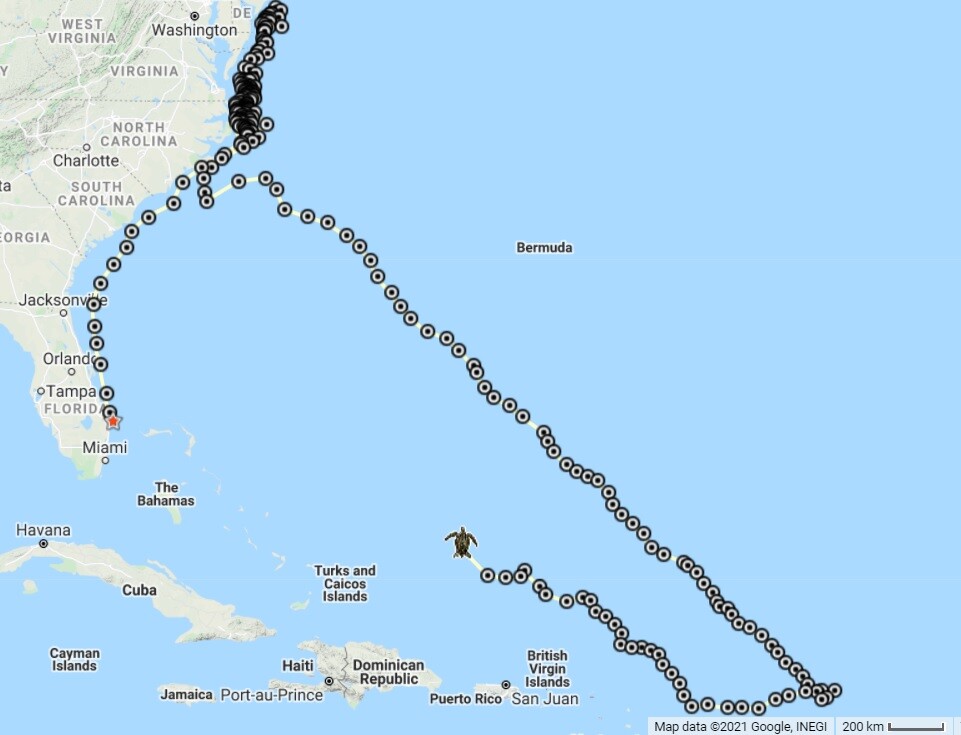
Hope’s original migration map which shows the location she stopped transmitting.
“Hope provides an incredible opportunity to track the same leatherback a second time from a nesting beach,” said Dr. Daniel Evans, STC Research Biologist. “She was an interesting turtle to follow in 2020, so we are excited and curious to see whether or not she follows her previous path.”
Hope developed a legion of dedicated fans who enjoyed checking her location online every day and following her incredibly unique track.
After transmitting for nearly nine months, Hope’s location stopped updating while she was located about 250 miles north of Puerto Rico. This can happen for a number of reasons—the tracking device may be damaged, have fallen off completely, or could be covered in biofouling which prevents it from sending a signal. Hope’s fans stood by hoping to see her signal come back online one day. Researchers were also hopeful she would start transmitting again, as her track indicated she may be returning to Florida, which would be an extremely unique event.
With no signal from Hope for almost two months, researchers from Florida Leatherbacks, Inc. were surprised when they came across a familiar turtle during their nightly track survey on March 29. It was Hope! It turns out, her satellite transmitter had fallen off, but they were able to identify her by her metal flipper tags and a PIT tag, or microchip. They were able to re-apply a satellite transmitter to continue tracking her, a very rare opportunity.
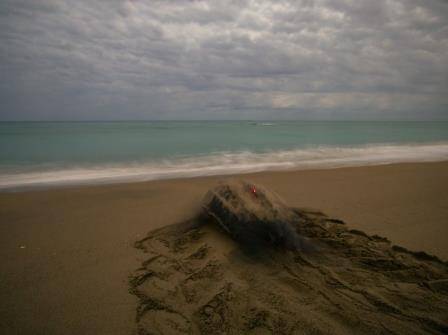
Hope the leatherback returns to the ocean after nesting. Photo credit Chris Johnson, Florida Leatherbacks
“We were incredibly excited and honestly quite shocked when the team found her again this year,” said Kelly Martin of Florida Leatherbacks Inc.” “We were even more thrilled that we had another satellite transmitter ready to go. This is the first time we have been able to track an endangered leatherback that has nested two years in a row and provides a very unique opportunity to look at behaviors that aren’t usually easy to track.”
As of Monday April 5, Hope is located about 30km east of the Ft. Pierce inlet in 128ft deep water. Since tagging last May, she has traveled more than 18,000 kilometers. The public can track Hope online at www.trackturtles.com/hope
**UPDATE 4/30/21 – Hope was encountered nesting again but unfortunately her new transmitter was no longer attached. It seems the attachment method failed or the transmitter came off while Hope was mating. However, we remain HOPEFUL that we will encounter Hope yet again and get one last try at satellite tracking her long-term. The scientific data she could provide would truly be invaluable!**

The Sea Turtle Grants Program (STGP), funded by the sale of Florida’s “Helping Sea Turtles Survive” specialty license plate, recently awarded $415,463.82 to 26 different projects benefiting Florida sea turtles as part of the 2021-2022 grant funding cycle. Since it’s inception, the Sea Turtle License Plate Grants Program has awarded more than $6.5 million to conservation projects.
Each year, the Sea Turtle Grants Program distributes money to coastal county governments, educational and research institutions and nonprofit groups through a competitive application process. The sea turtle specialty license plate is also the primary source of funding for the Florida Fish and Wildlife Conservation Commission’s Marine Turtle Protection Program.
The following organizations received grants for their approved projects for the 2021-2022 cycle:
The sea turtle plate is the number three overall selling specialty tag in Florida, and the number one environmental specialty plate. By purchasing the sea turtle specialty license plate, Floridians are voluntarily funding important programs to save endangered sea turtles and their habitats.
To learn more about the Sea Turtle Grants Program and the “Helping Sea Turtles Survive” specialty license plate, please visit www.helpingseaturtles.org.
Florida’s sandy beaches are unlike any place in the world. More than 100 million people visit them each year, making them the main economic driver for our state. They provide coastal recreation, bring aesthetic beauty and infuse billions of dollars into our economy each year. Florida’s sandy beaches are part of our state’s identity and our economic health.
At the same time, Florida’s beaches provide the most important nesting habitat for loggerhead sea turtles in the world. For those of us lucky enough to have witnessed a sea turtle crawling out of the sea at night to lay her eggs, or to have seen a nest of tiny hatchlings emerge from their nest and instinctively charge toward the water, you know how special Florida is for threatened and endangered sea turtles. All sea turtle species that nest in Florida are protected by both State and Federal law. These laws also protect their nesting habitat, meaning it is unlawful for things like sea wall construction to destroy this habitat.
A bill introduced recently in the Florida House and Senate (H.B. 1133 and S.B. 1504) seeks to deregulate coastal armoring, allowing for the rampant proliferation of sea wall construction around the coastline of Florida. No sandy beach would be safe. If approved, this bill would convert Florida’s coastline to concrete to protect the thin ribbon of pricey properties built on the beachfront – all while risking Florida’s economy; cutting off beach access for Floridians and tourists; and decimating the most important habitat for loggerhead turtles in the world.
For decades, bipartisan leaders of Florida have recognized the value of our sandy beaches. Sea walls and other forms of “hard armoring” to protecting upland property from erosion have been viewed as a last resort option because of how much is sacrificed once you erect a wall on the beach. Once installed, sea walls disrupt the natural beach dynamics and rapidly increase the rate of erosion down the beach—creating a “domino effect” that necessitates more and more sea walls—destroying sea turtle and shorebird nesting habitat, cutting off public access and eliminating the aesthetic, recreational and economic value of the coast for everyone.
The bills filed by Representative Tom Leek and Senator Tom Wright, whose districts include parts of Volusia and Brevard Counties, represent a complete abandonment of the thoughtful management of Florida’s natural, sandy beaches. They are a major threat to Florida’s wildlife and Florida’s economy, and they should be withdrawn from consideration.
What these bills would do is eliminate any real consideration of whether upland structures are actually vulnerable to erosion before qualifying for a sea wall. If a beachfront property owner requests a permit to build a sea wall (or seeks a permit for a wall already installed illegally), the Florida Department of Environmental Protection would be forced by law to grant the permit. No consideration of impacts to the beach, no consideration of impacts to neighbors, no consideration of other alternatives and certainly no consideration of federally protected sea turtles.
We need your help to stop this horrible legislation from moving forward. Please contact bill sponsors Representative Tom Leek and Senator Tom Wright and tell them to remove this bill from consideration in order to protect Florida’s wildlife and way of life.
Senator Tom Wright
District Office: (386) 304-7630
Satellite Office: (386) 304-7630
Tallahassee Office: (850) 487-5014
Email: wright.tom.web@flsenate.gov
Representative Tom Leek
Capitol Office: (850) 717-5025
District Office: (386) 238-4865
Email: Tom.Leek@myfloridahouse.gov
If you would like to contact STC staff about these bills, email David Godfrey (david@conserveturtles.org) or Stacey Gallagher (Stacey@conserveturtles.org).
Project description: Conservation and monitoring of nesting hawksbills and their nests.
Location: Bocas del Toro Province, Panama, Bastimentos Island National Marine Park (BINMP): Zapatilla Cays and Playa Larga
Project Dates: 27 April – 2 November 2021.
Due to training requirements and logistical challenges, all RA’s must commit to a minimum two-month stay. Special consideration for RA’s who can start as early as 27 April or who are able to stay until 2 November.
Applications will be accepted until all positions are filled.
Project summary:
Since 2003, Anne and Peter Meylan have worked in partnership with the Sea Turtle Conservancy (STC) to monitor important Panamanian sea turtle nesting beaches in Bocas del Toro Province and the Comarca Ngäbe Buglé, from the Changuinola River (border with Costa Rica) to the Chiriquí River. Four sea turtle species are found in the waters of Bocas del Toro and the Comarca; Leatherback (Dermochelys coriacea), Hawksbill (Eretmochelys imbricata), Green (Chelonia mydas) and Loggerhead (Caretta caretta). Within this region, we have standardized monitoring, research and protection efforts in collaboration with STC and members of local communities close to the nesting beaches. This program has had very positive results. More than 1000 hawksbill nests were recorded in the BINMP in each of the last two nesting seasons. In the last 15 years, there has been a reduction in the illegal killing of turtles on the majority of nesting beaches in the area, and an increasing nesting trend for Hawksbill turtles. Despite these advances, numerous threats remain for the sea turtles within and adjacent to BINMP, including increasing pressure on coastal and marine habitats through unregulated tourism development and the continued hunting of turtles for personal consumption and commercial purposes both on the beach and within park waters.
Additional information and about how to apply can be found on the STC website.
Click here for Spanish version
Project description: Conservation and monitoring of critically endangered green turtles
Location: STC Field Station, Tortuguero, Costa Rica
Dates:
Group 1: June 7 – August 24, 2021
Group 2: August 12 – November 1, 2021
Application Deadline: March 12, 2021
Project summary:
Research and monitoring of sea turtles in Tortuguero, Costa Rica was initiated in the 1950´s by legendary sea turtle researcher Dr Archie Carr. Dr Carr continued his work in Tortuguero until his passing away in 1987 and each year from June – November Sea Turtle Conservancy (STC) conducts the Green Turtle Program, continuing the work started by Dr Carr. STC works closely with Costa Rican authorities, the Tortuguero community and other sea turtle conservation organizations in the country. Information collected during the annual Green Turtle Program plays a key role in developing effective management strategies for sea turtles in the area.
Green Turtle RA Application 
Green Turtle RA Application (Word doc)
Click here for Spanish version
Location: Bocas del Toro Province and Comarca Näbe Buglé, Panama
Dates: June 29– September 17, 2021
Application Deadline: March 5, 2021
Project summary:
Since 2003, STC (Sea Turtle Conservancy) has worked at important Panamanian sea turtle nesting beaches in the Bocas del Toro Province and the Comarca Ngäbe Buglé, from the Changuinola river to the Chiriquí river. Four sea turtle species are found in the waters of Bocas del Toro and the Comarca; Leatherback (Dermochelys coriacea), Hawksbill (Eretmochelys imbricata), Green (Chelonia mydas) and Loggerhead (Caretta caretta). Within this region STC has standardized monitoring, research and protection efforts in collaboration with members of communities close to the nesting beaches. In addition, education and awareness programs have been developed to highlight the importance of protecting and conserving sea turtles and other natural resources. This program has had very positive results. In the last 12 years there has been a reduction in the illegal killing of turtles on the majority of nesting beaches in the area, and an increasing nesting trend for both Leatherback and Hawksbill turtles. Despite these advances, numerous threats remain for the region’s sea turtles, including predation of nests by domestic dogs, increasing pressure on coastal and marine habitats through unregulated tourism development, and the continued hunting of turtles for personal consumption and commercial purposes.
Panama RA Application (Word)
Introducing the winning photos from our 2021 Sea Turtle Calendar Contest! Thank you so much to everyone who entered this year’s contest. It gets harder every year to narrow down hundreds of beautiful images to only 13 photos! Calendars will be for sale in our online gift shop in November. We will post the link once they’re live.
COVER PHOTO – BEN HICKS
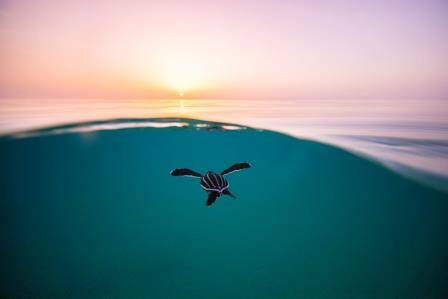
JANUARY – MARIO CISNEROS

FEBRUARY – ADHITH SWAMINATHAN
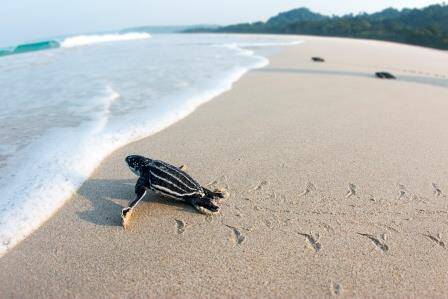
MARCH – HECTOR CHENGE

APRIL – KATHY WIANKE

MAY – BARBARA SELLES
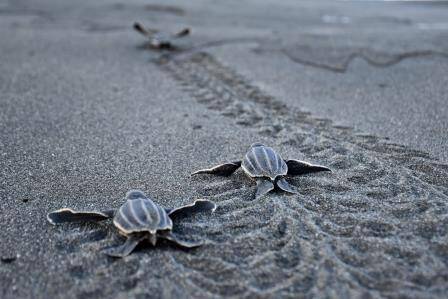
JUNE – KARLA G. BARRIENTOS MUNOZ

JULY – CHRISTIAN MARTINEZ
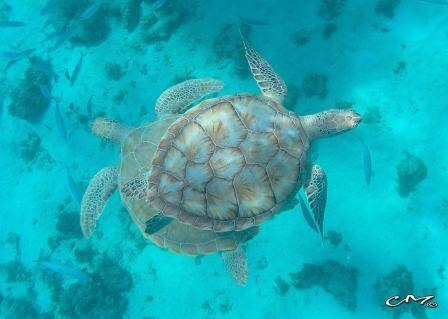
AUGUST- MARIO CISNEROS

SEPTEMBER – ADHITH SWAMINATHAN

OCTOBER – RALPH PACE

NOVEMBER – ARGHYA ADHIKARY

DECEMBER – STEFANIE PLEIN

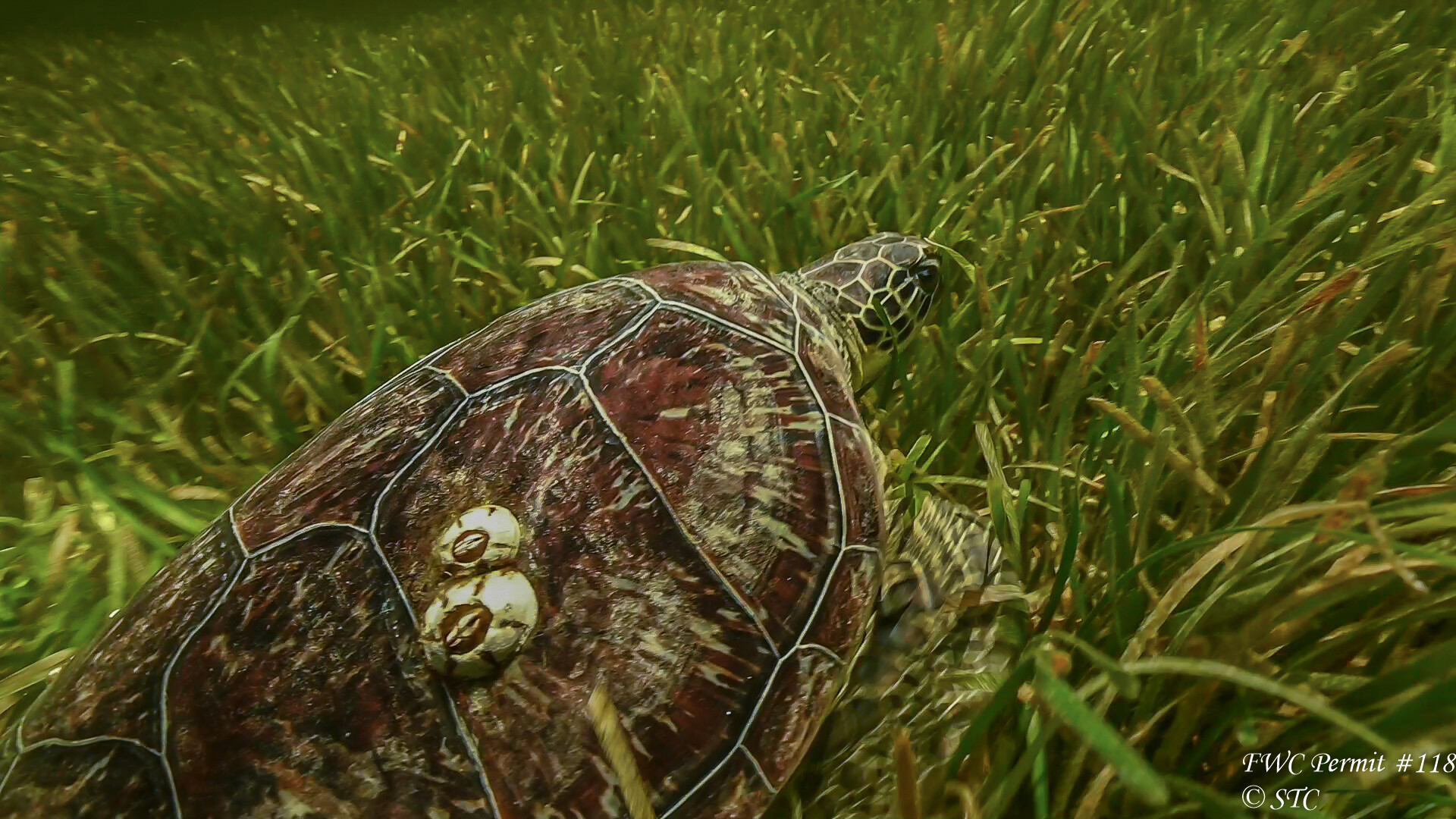
The coastal waters off of Florida’s Big Bend are a developmental habitat for juvenile sea turtles. Pictured here is a juvenile green turtle exploring a shallow seagrass bed.
In May 2019, Florida Governor Ron DeSantis signed Section 338.2278, which created the Multi-Use Corridors of Regional Economic Significance (M-CORES) Program. This program proposes that the Florida Department of Transportation (FDOT) build three new toll highways, which would permanently destroy some of the last remaining wild stretches of coastline in Florida.
One of the three proposed roads, the Suncoast Connector, would slice through the Big Bend coastal region of northwest Florida and cause irreparable harm to the area’s pristine coastal waters and productive seagrass habitat. Through its In-Water Research Project, Sea Turtle Conservancy (STC) studies and protects the juvenile turtle populations that grow up along this coastline. The shallow seagrass beds in this region of Florida are a globally-important developmental habitat for young green, loggerhead and Kemp’s ridley sea turtles. Juvenile turtles spend their time foraging and growing up in this area until they reach maturity. When they leave the Big Bend, they become essential components of the marine ecosystems around Florida and throughout the Caribbean and Central America.
The fragile turtle nursery of the Big Bend exists because of the region’s relative lack of development. The Nature Coast is one of the few places in Florida where annual red tide blooms are not observed because of the degraded water quality. Seagrass is declining worldwide largely due to human impacts. Yet, the Nature Coast contains 1,200 square miles of seagrass habitat, which is the second largest area of its kind in the eastern Gulf of Mexico. These shallow water communities are home to thousands of invertebrates, fish and turtles, many of which depend on seagrass for protection and food. However, this habitat is incredibly vulnerable to runoff and other impacts from overdevelopment, which inevitably will occur if these massive highways move forward.
Iconic rivers, including the Suwannee, Withlacoochee, Steinhatchee and Aucilla, would be forever impacted by these proposed toll roads. Runoff from highways and associated development in the area would leech into waterways and pollute nearby coastal waters, putting juvenile turtles at risk from degraded water quality and disease. Fibropapillomatosis, a tumor-causing disease afflicting juvenile turtles is directly correlated with runoff from roads, septic tanks and other kinds of development sprawl these highways would bring to the region. The Nature Coast’s juvenile turtles and so many other forms of ecologically and economically important coastal wildlife will be in the crosshairs if these unnecessary highways move forward.

The proposed path of each toll road, seen here, will cut through some of Florida’s last remaining wild places. Credit: FDOT
For the past year, the three toll roads have been studied by task forces comprised of state and local governments, environmental groups, water management districts and non-profit organizations. In September, each task force released its findings and concluded that none of these tolls roads are needed. Instead, the task forces recommended that the FDOT focus on updating existing roads. Cornell Consulting, a firm contracted by the No Roads to Ruin Coalition, found that each toll road was “financially infeasible.” The construction of the roads alone will cost an estimated $10.3 billion over the next ten years.
These proposed highways are not yet set in stone. The State of Florida has the ability to adopt a “no build” option, which would remove the
MCORES Program from the FDOT’s Five Year Work Plan. STC is asking its members and supporters to help us save one of Florida’s last wild stretches of coastline by voicing your opposition to the M-CORES toll highways.
The FDOT is accepting public comment on each task force’s final report until Wednesday, October 14. The final findings will be delivered to Governor DeSantis on November 15.
You still have time to submit a comment opposing the roads online. Please take a minute to voice your opposition to the Suncoast Connector. Simply click this link and scroll to the bottom of the page to submit a comment voicing your opposition: https://storymaps.arcgis.com/stories/5c2d25cdbcf34ecc97b9a7b4ba5b2b10
Sea Turtle Conservancy (STC) recently kicked off its 13th annual Tour de Turtles migration marathon! The Tour de Turtles is a fun, educational journey that follows the migration of sea turtles from their nesting beaches to their foraging grounds. Through the use of satellite telemetry, STC will track 15 sea turtles, including leatherbacks, loggerheads, greens and one hybrid green/hawksbill, to determine how far they swim. The one to swim the furthest distance by October 31 “wins.”
Each turtle is also swimming to raise awareness about the threats sea turtles face. These threats include light pollution, beach erosion, marine debris, oil spills, commercial fisheries, illegal hunting, invasive species predation, climate change and more. The data collected during the Tour de Turtles helps researchers, conservationists and governing agencies make more informed decisions about sea turtle conservation methods and policies. Since the launch of the Tour de Turtles in 2008, STC has tracked more than 200 turtles.
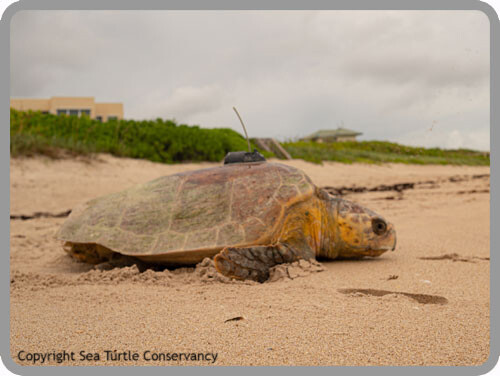
This year’s Tour de Turtles is special for several reasons… For the first time ever, it is comprised entirely of turtles from Florida. This is also the first time STC has tracked leatherbacks from Florida, thanks to a partnership with Florida Leatherbacks, Inc. Typically the organization travels to Panama, Costa Rica, Cuba, Nevis and other international sites to satellite tag turtles but was limited to Florida due to COVID-19.
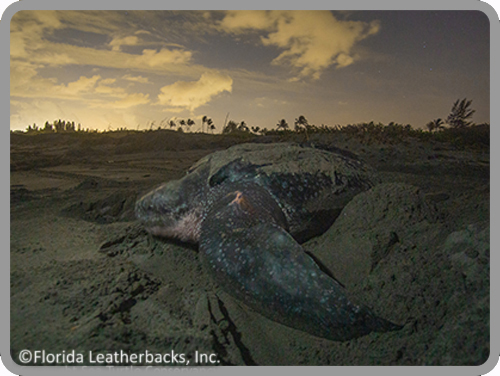
You can support the turtles by “adopting” them or sharing on social media to help raise awareness! Learn more about the turtles and follow their migrations at www.tourdeturtles.org. You can also purchase a Tour de Turtles 2020 t-shirt by clicking here or below!
Sea Turtle Conservancy’s research and conservation program at Tortuguero, Costa Rica, is a conservation success story. When STC’s founder Dr. Archie Carr first arrived at the site in the 1950s, the green turtle population was in drastic decline—slipping toward extinction—due to the unsustainable harvesting of nesting turtles. Over the next six decades, a sustained research, education and conservation program has been carried out by STC, in close partnership with the community of Tortuguero and the Government of Costa Rica. Through the combined efforts of everyone involved, the unsustainable harvesting of sea turtles was eliminated and replaced with a local economy built on ecotourism. Once protected, the turtles responded by recovering to the point of being the largest remaining colony of green turtles (Chelonia mydas) in the Western Hemisphere (and probably the world), and STC’s program at Tortuguero has become a global model for how sea turtles can be saved. Unfortunately, a situation is unfolding in Tortuguero due to COVID-19 that jeopardizes much of the success that has been achieved to recover this globally-important sea turtle population.

Because Costa Rica’s borders are closed to foreign visitors for the foreseeable future, nearly all of STC’s international Research Assistants, who assist with carrying out our research and protection program, are unable to get to Tortuguero. Even if the borders open later this summer, most of our previously-committed volunteers have had to make other plans. As a result, STC’s small crew of staff members in Tortuguero have been thrust onto the front lines of wildlife protection, performing tasks that once were carried out by a team of 25 people. STC also has seen the complete loss of revenue we count on from our Visitors’ Center gift shop and an eco-volunteer program we normally conduct at our research station. Meanwhile, the presence of Costa Rican law enforcement on the beach at Tortuguero has dwindled significantly, at the same time the threat of illegal hunting is skyrocketing due to the collapse of ecotourism in the country. Without the typical presence of park guards, tour groups and tourists on the beach in Tortuguero, STC is documenting significant increases in illegal poaching of adult turtles and nests. This alarming trend, combined with the complete lack of revenue being generated in Tortuguero, is STC’s biggest programmatic challenge resulting from the pandemic.

Our staff members are working overtime day and night to deter turtle hunters from killing turtles as they crawl ashore to nest, and we are doing our best to hide nests in order to protect the eggs from being taken. While the calamity unfolding in Tortuguero is not on the same level as what has been confronting healthcare and other front-line workers serving people in the US and abroad, STC’s dedicated staff Tortuguero is manning the front line of defense on behalf of imperiled sea turtles that are under greater threat because of the impacts of the pandemic.
In honor of World Sea Turtle Day (June 16), a date selected because it is Archie Carr’s birthday, STC asks for your support. Please help us sustain the critical work taking place in Tortuguero to ensure that the incredible progress made on behalf of sea turtles over the last six decades is not jeopardized as a result of this pandemic. Your donation will directly support STC’s ability to hire additional Costa Ricans to fill the void created by our lack of international volunteer Research Assistants. Donations will also be matched up to $5,000 through June 16.

This need is urgent and timely, as green turtle nesting is now underway. A single season of rampant illegal harvesting of adult turtles can severely jeopardize the recovery of green turtles at Tortuguero—one of the world’s great conservation success stories. With your help, we will have the ability to ensure that this does not happen. Click here to donate now.
For more information about STC’s work in Tortuguero, click here: http://stcturtle.org/stc-programs-research-tortuguero-costa-rica/.
Sea Turtle Conservancy (STC) is proud to announce another top rating from Charity Navigator, the leading evaluator of non-profit groups in the United States. STC received 4 out of 4 stars for the 13th year, indicating that our organization adheres to good governance and other practices that minimize the chance of unethical activities and consistently executes our mission in a fiscally responsible way.
“The Board and staff of Sea Turtle Conservancy take great pride in our consistent high ratings from Charity Navigator,” said David Godfrey, STC Executive Director, “and it gives our donors confidence that their contributions are being managed wisely to the maximum benefit of sea turtles.”
According to Charity Navigator, a 4 star rating is an ‘exceptional’ designation, and differentiates Sea Turtle Conservancy from its peers and demonstrates to the public it is worthy of their trust. STC spends almost 90 cents of every dollar donated directly on research, conservation and education programs. STC’s commitment to transparency, good governance and fiscal responsibility ensures that donations are used in an efficient manner to support conservation programs.
 “We are proud to announce Sea Turtle Conservancy has earned our fourth consecutive 4-star rating,” says Michael Thatcher, President and CEO of Charity Navigator. “This is our highest possible rating and indicates that your organization adheres to sector best practices and executes its mission in a financially efficient way. Attaining a 4-star rating verifies that Sea Turtle Conservancy exceeds industry standards and outperforms most charities in your area of work. Only 20% of the charities we evaluate have received at least 4 consecutive 4-star evaluations, indicating that Sea Turtle Conservancy outperforms most other charities in America. This exceptional designation from Charity Navigator sets Sea Turtle Conservancy apart from its peers and demonstrates to the public its trustworthiness.”
“We are proud to announce Sea Turtle Conservancy has earned our fourth consecutive 4-star rating,” says Michael Thatcher, President and CEO of Charity Navigator. “This is our highest possible rating and indicates that your organization adheres to sector best practices and executes its mission in a financially efficient way. Attaining a 4-star rating verifies that Sea Turtle Conservancy exceeds industry standards and outperforms most charities in your area of work. Only 20% of the charities we evaluate have received at least 4 consecutive 4-star evaluations, indicating that Sea Turtle Conservancy outperforms most other charities in America. This exceptional designation from Charity Navigator sets Sea Turtle Conservancy apart from its peers and demonstrates to the public its trustworthiness.”
STC’s rating and other information about charitable giving are available free of charge on Charity Navigator’s website here.
The Sea Turtle Grants Program (STGP), funded by the sale of Florida’s “Helping Sea Turtles Survive” specialty license plate, recently awarded $340,439.60 to 20 different projects benefiting Florida sea turtles as part of the 2020-2021 grant funding cycle.

Each year, the Sea Turtle Grants Program distributes money to coastal county governments, educational and research institutions and nonprofit groups through a competitive application process. The sea turtle specialty license plate is also the primary source of funding for the Florida Fish and Wildlife Conservation Commission’s Marine Turtle Protection Program.
The following organizations received grants for their approved projects for the 2020-2021 cycle:
The sea turtle plate is the number two overall selling specialty tag in Florida, and the number one environmental specialty plate. By purchasing the sea turtle specialty license plate, Floridians are voluntarily funding important programs to save endangered sea turtles and their habitats.
To learn more about the Sea Turtle Grants Program and the “Helping Sea Turtles Survive” specialty license plate, please visit www.helpingseaturtles.org.
**UPDATE: Unfortunately, the public lost the vote, 3-2. Thank you to everyone who sent emails, made calls and attended the meeting. 15 people spoke for the changes, and 1 developer spoke against them. If nature and conservation groups unite to make changes to the local government, we have a chance of preserving a legacy for future generations….otherwise, it will only get worse, and all the work we’ve done will be for naught. “They paved paradise, put up a parking lot” as Joni Mitchell sang in 1970.**
———-
There is a rare opportunity to reduce the impact of a highly destructive “loophole” in Brevard’s laws governing Specimen and Heritage trees at an upcoming commission meeting.
Before It’s Too Late! Let’s Save Brevard’s Remaining HERITAGE and SPECIMEN Trees
Why would Brevard County adopt a thorough, 28-page Land Clearing and Tree Protection Policy and include a single sentence, in Section 62-4334, that EXEMPTS 299,508 properties (90%) from following the policy? The result is that a large part of our county’s tree canopy (any property less than one and one-quarter acres), including heritage and specimen trees, can be clear cut at the whim of owners. Think about that for a minute…
Towering 100-year-old Live Oaks, Pin Oaks and Scrub Oaks are being cut down every day. 50-foot tall Sea Grapes, Coconut Palms, Bottle Palms, Royal Palms, Washingtonians and any other trees can be cut down for any reason, or no reason at all, under Brevard county law … No Permits Required!

This Brevard Co. property clear cut and replaced native trees with grass and pavers, which will now funnel even small amounts of rain and flooding first to A1A, and then the Indian River Lagoon.
After extensive discussions with Brevard County Commissioners and Natural Resources staff about the best means to reduce this destruction, the Commissioners will be voting Tuesday, March 10, on a “Legislative Intent” to amend the Specimen tree ordinance. This amendment reduces the exempt properties from 1 ¼ acres to 1/4 acres and achieves the following:


Sea Turtle Conservancy strongly supports this proposed revision to Brevard County’s tree ordinance, which would remove an exemption that allows many beachfront property owners to indiscriminately chop down large coastal scrub oaks, mature sea grape trees and other large coastal trees that play a critical role in stabilizing dune habitat and minimizing erosion following storms. The coastal vegetation to be protected by this new ordinance also helps shield important sea turtle nesting sites from artificial light coming from beachfront developments. In short, this revised ordinance will help protect some of the most important sea turtle nesting habitat in the world from the reckless removal and clear-cutting of coastal vegetation – a practice that worsens the rate of coastal erosion, especially in a time of increased storm activity and sea level rise associated with climate change, and exposes sea turtles and their hatchlings to greater levels of light pollution.
Meeting Date: Tuesday, March 10 @ 5pm
Location: Brevard County Gov’t Center, 2725 Judge Fran Jamieson Way, Bldg C, Viera


E-mails are very important if you are unable to attend the meeting. You do NOT have to be a resident of Brevard County to speak up about this issue. Please pick any or all of the 7 items above as the basis of and e-mail to all 5 Commissioners:
I Support an Amendment to reduce to 1/4 acres, or eliminate, the exemption on the cutting of our trees in Section 62-4334 of Brevard Code.
E-Mail to: d1.commissioner@brevardcounty.us for Rita Prichett 321-607-6901
d2.commissioner@brevardcounty.us for Brian Lober 321-454-6601
d3.commissioner@brevardcounty.us for John Tobia 321-633-2075
d4.commissioner@brevardcounty.us for Curt Smith 321-633-2044
d5.commissioner@brevardcounty.us for Kristine Isnardi 321-253-6611
Together we can make this happen!
Overview and Purpose
Sea Turtle Conservancy (STC) is based in Gainesville, Florida, and was founded by renowned sea turtle expert Dr. Archie Carr. STC is the oldest and one of the most accomplished sea turtle conservation organizations in the world. STC is hiring a Senior Accountant to assist the STC Controller in managing and accounting for projects in the US, Costa Rica, Panama, and the Caribbean.
Duties and Responsibilities
This position is full time, based in our Gainesville, Florida office. Accounting tasks will be many and varied, under the direct supervision of the Controller. They will include:
Minimum Qualifications
Salary and Benefits
Applications will be accepted until a candidate is selected. Apply by submitting your cover letter and resume to the Controller, Pat McCloskey, at pat@conserveturtles.org.
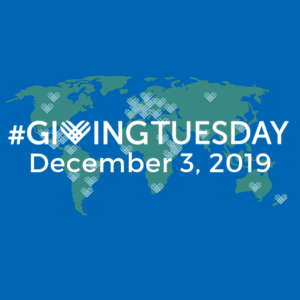 On December 3, Sea Turtle Conservancy (STC) is participating in our 7th annual Giving Tuesday to raise $50,000 for our Research Station in Soropta Beach, Panama! STC is hoping all of its members and supporters will participate in this year’s Giving Tuesday Campaign, which seeks to raise matching funds for the critical work we are doing at Soropta Beach to protect and recover leatherback sea turtles. Giving Tuesday, which occurs the Tuesday after Thanksgiving, is to remind people to take a moment to contribute to non-profit organizations in their communities and around the world.
On December 3, Sea Turtle Conservancy (STC) is participating in our 7th annual Giving Tuesday to raise $50,000 for our Research Station in Soropta Beach, Panama! STC is hoping all of its members and supporters will participate in this year’s Giving Tuesday Campaign, which seeks to raise matching funds for the critical work we are doing at Soropta Beach to protect and recover leatherback sea turtles. Giving Tuesday, which occurs the Tuesday after Thanksgiving, is to remind people to take a moment to contribute to non-profit organizations in their communities and around the world.
For Giving Tuesday last year, STC supporters helped generate over $40,000 to support STC’s in-water research program benefiting juvenile turtles in the Gulf of Mexico. The year before (2017), our supporters raised nearly $20,000 for the Tour de Turtles education program. STC has set its sights even higher this year, and we are confident we can reach the goal of $50,000 thanks to generous pledges from STC’s Board of Directors to match up to $25,000 for every dollar donated by STC’s members and supporters.

STC asks for your help to support one of our most urgent conservation programs. Every bit of the funding raised during the 2019 Giving Tuesday Campaign will support leatherback monitoring and protection efforts at a critical nesting site for this species at Soropta Beach, Panama. Soropta is a remote, 8 km black-sand beach that sees between 500 and 800 leatherback nests each season – making it an important part of the 4th largest nesting colony for this species in the world. Unfortunately, the area’s remoteness makes Soropta highly vulnerable to illegal hunting. STC’s presence on this beach since 2013 has helped curb illegal harvesting, but it’s still an ongoing problem.
By raising up to $50K to support this project, STC will be able to secure additional beach monitors and also make needed improvements to the station used by STC’s staff and volunteers. Our modest dormitories, kitchen and dining hall need repairs, as nature has taken its toll on the old wooden station inherited by STC. In addition, a small dock leading from the river behind our station (the only way to travel to and from Soropta), is in disrepair and must be extended to higher elevation so it’s not underwater during the rainy season.

STC’s Soropta station houses staff and volunteer Research Assistants, who stay during nesting season to monitor and protect the turtles and their nests. Starting last year, STC also began accepting paying eco-volunteers who participate in one- or two-week programs, revenues from which help support STC’s work in Soropta. In order to sustain our presence at Soropta and provide a safe and secure base for staff and volunteers, we need to invest in station maintenance and upgrades. By raising $50K for Giving Tuesday, STC can make all the necessary repairs and also provide needed funds for research supplies, food and fuel for the program.
Help STC support our leatherback research and conservation program in Panama by donating to the cause in one of four ways:
Can we count you in for #GivingTuesday? Be sure to follow our Facebook and Twitter for LIVE fundraising updates on Giving Tuesday!